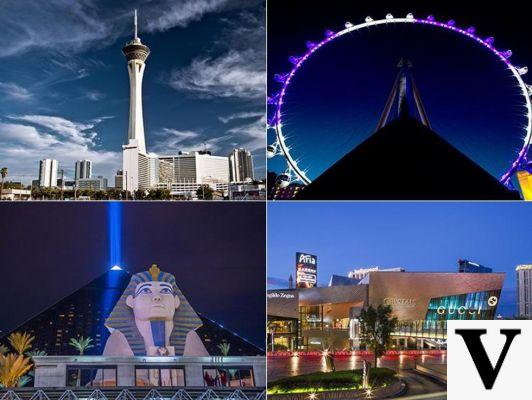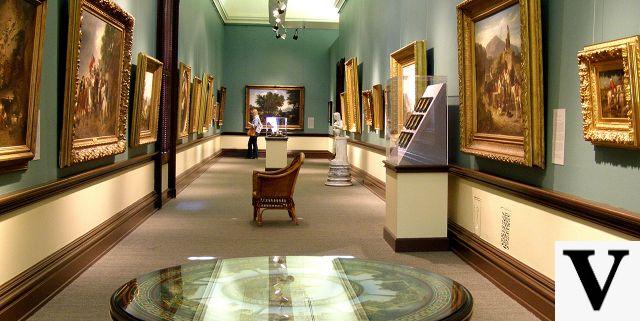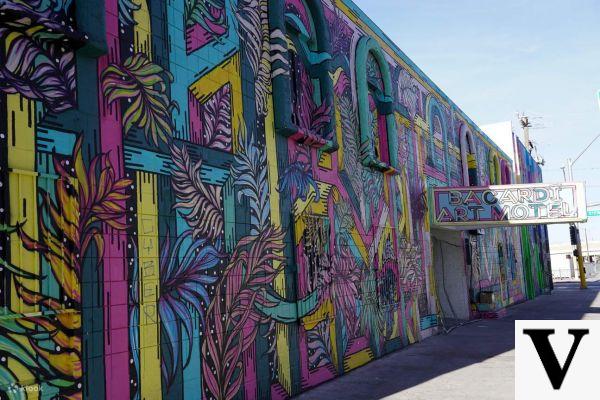
Architectural Wonders: Exploring Unique Buildings in Las Vegas
Welcome to Las Vegas, where the buildings are wild, unusual, and sometimes downright weird. In this article, we will delve into the fascinating world of architectural wonders in Las Vegas, exploring the unique buildings and the visionary architects behind them. From the iconic Bellagio fountains to the whimsical Mirage Hotel and Casino, these structures are a testament to the creativity and imagination that have shaped this vibrant city.
Conclusions
In Las Vegas, the buildings are not just structures, but works of art. The architects and designers behind these architectural wonders have transformed the barren desert into a fantastical landscape of dreams and excitement. Let's take a closer look at some of the most famous Las Vegas buildings and the creative minds that brought them to life.
- The visitor center building, originally the La Concha Hotel lobby, is an iconic mid-century modern architectural structure and a beloved piece of Las Vegas history. It was designed by Paul Revere Williams in 1961 and now stands as part of the Neon Museum.
- The Bellagio fountains, designed by Jon Jerde, captivate onlookers with their aquatic acrobatics. This concept of a lake in the desert with dancing fountains was inspired by a real Italian town named Bellagio.
- The Mirage Hotel and Casino, designed by Joel Bergman, is a tropical paradise in the middle of the desert. It features a two-story aquarium, a 1,300,000-gallon Shark Reef, and hosts the Cirque du Soleil tribute show, The Beatles LOVE.
- The iconic Welcome to Las Vegas sign, designed by Betty Willis, greets visitors and has become a symbol of the city. It showcases the Googie architecture style that was popular at the time.
- New York New York Hotel and Casino, designed by Neal Gaskin and Illia Bezansky, recreates the iconic buildings and landmarks of the Big Apple. Its skyline is a fun-sized version of the originals, while still offering thrilling experiences.
- The Fremont Street Experience, covered by the largest video screen canopy in the world, was designed by Jon Jerde. It transformed the area into a vibrant destination with ziplines and a mesmerizing light show.
- The Stratosphere Tower, designed by Ned Baldwin, stands tall as a futuristic landmark. Its pointy towers guide visitors to the Strip, offering breathtaking views of the city.
- The MGM Grand, designed by Veldon Simpson, takes visitors on a whimsical journey through the Wizard of Oz experience. It has undergone several remodels but still retains its Emerald City green exterior.
- Caesars Palace, designed by Melvin Grossman, transports visitors to another time and place with its neoclassical architecture. The statues, decor, and topiary-filled garden create an enchanting atmosphere.
- The Cleveland Clinic Lou Ruvo Center, designed by Frank Gehry, stands as a truly unique building in Las Vegas. Its twisted and unconventional design makes it a remarkable work of art.
- Treasure Island, designed by Joel Bergman and Jon Jerde, offers a thrilling pirate-themed experience. While the theme has been scaled back, the spirit of adventure still lives on.
Historical Context and Evolution
Las Vegas has a rich history of architectural innovation and evolution. The city's transformation from a barren desert to a bustling entertainment hub is a testament to the vision and determination of its architects and designers.
In the early 1960s, Las Vegas saw the rise of mid-century modern architecture, with the construction of iconic buildings like the La Concha Hotel lobby, now the visitor center building. This architectural style, characterized by clean lines and geometric shapes, became synonymous with the city's identity.
As Las Vegas continued to grow, architects like Jon Jerde and Joel Bergman pushed the boundaries of design, creating immersive experiences that transported visitors to different worlds. The Bellagio fountains and the Mirage Hotel and Casino are prime examples of this approach, combining architectural marvels with captivating shows and attractions.
The city's architectural landscape also reflects the changing tastes and trends over the years. From the pirate-themed Treasure Island to the neoclassical grandeur of Caesars Palace, each building tells a story of the era in which it was conceived.
Analytical Insights
When analyzing the architectural wonders of Las Vegas, certain trends and comparisons emerge. The table below highlights some key insights:
| Architect | Notable Buildings | Design Style |
|---|---|---|
| Paul Revere Williams | Visitor Center Building (La Concha Hotel lobby) | Mid-century modern |
| Jon Jerde | Bellagio Fountains, Fremont Street Experience | Innovative and immersive |
| Joel Bergman | Mirage Hotel and Casino, Treasure Island | Whimsical and themed |
| Betty Willis | Welcome to Las Vegas sign | Googie architecture |
| Frank Gehry | Cleveland Clinic Lou Ruvo Center | Unconventional and unique |
These architects have left an indelible mark on the cityscape of Las Vegas, each contributing their own distinct style and vision.
Future Outlook
The future of architectural wonders in Las Vegas holds endless possibilities. As the city continues to evolve, new buildings and designs will shape its skyline and redefine the visitor experience.
One potential direction is the integration of sustainable and eco-friendly design principles. With increasing awareness of environmental issues, architects may incorporate green technologies and practices into their creations, creating a more sustainable Las Vegas.
Another exciting prospect is the fusion of technology and architecture. As advancements in virtual reality and augmented reality continue, architects may explore new ways to enhance the immersive nature of their designs, blurring the lines between physical and digital experiences.
Ultimately, the future of architectural wonders in Las Vegas will be driven by the imagination and innovation of the architects and designers who dare to dream big. As visitors and locals continue to be captivated by these unique buildings, Las Vegas will remain a city like no other.
So, whether you're a first-time visitor or a seasoned Las Vegas enthusiast, take the time to appreciate the incredible artistry and creativity that went into creating these famous buildings. They are a testament to the power of imagination and the enduring allure of Las Vegas.
While you're here, don't forget to immerse yourself in the world of Cirque du Soleil, where imagination knows no bounds. Experience the awe-inspiring performances and vibrant shows that complement the architectural wonders of Las Vegas.







